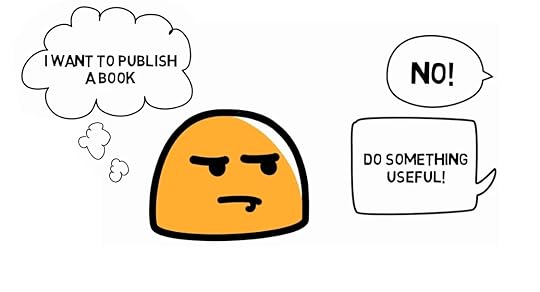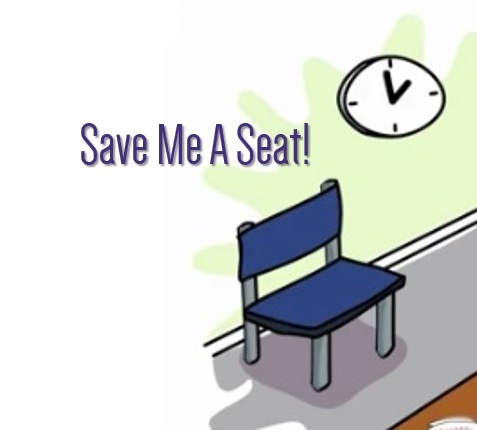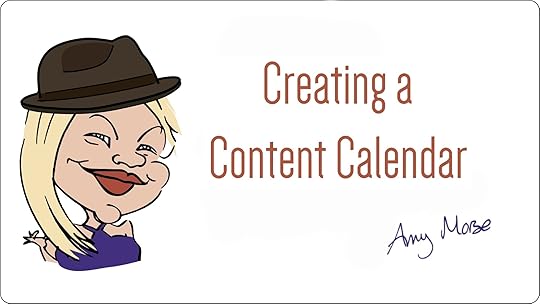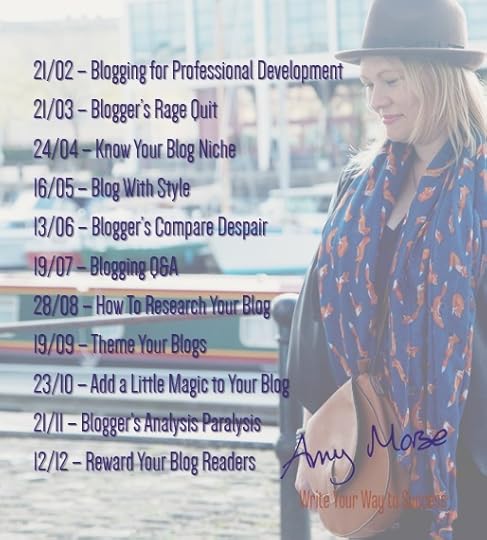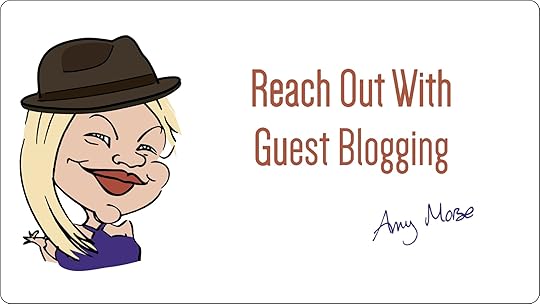Amy C. Fitzjohn's Blog, page 25
March 6, 2018
Why Your Blog Has a Huge Impact on Your Business – Guest Post
Blogging has had an impact, and been the foundation of my business, since my early blogs in 2013 when I was preparing to publish The Bronze Box.
Over the past five years, my blogs have become the staple of everything I do.
Blogging is so much more than SEO (Search Engine Optimisation). Blogging is still the best way to make your website Google friendly, and although this is often why people start a blog, it’s not the only reason to keep at it.
The Impact of a Blog
A blog can:
Refine your business
Make money by generating vluable inforation
.. or just plan fun! We can all learn to love our words and blogging is a great place to start.
I’m always happy to support and showcase other businesses and writers, so when Cassie Philips got in touch with me again recently, after I hosted her as a guest last year, I was happy to showcase her freind, Ellie Saunders too.
Ellie Saunders is a young mother who is passionate about digital businesses. She is currently enjoying her marketing role at eVoice , a place where businesses can get virtual and toll free numbers.
I’ve shared 3 of the many reasons why blogging has such an impact on businesses, and here are 7 more from Ellie…
Why Your Blog Has a Huge Impact on Your Business
For many small businesses, it can be difficult to see the need for a blog, let alone find the time and resources to produce fresh, unique content on a weekly basis. Blogging, however, can play an important role in the success of your website and overall business.
Whatever industry you are in, there’s a range of benefits to be had from blogging and ignoring the need for a company blog will leave you behind the competition. These benefits are why your blog can have a huge impact on your business.

Blogging increases search engine traffic
Blogging about interesting and relevant things happening within your industry or business is one of the best ways to increase traffic from search engines. Furthermore, this will only improve as you increase the amount of blog posts you have live.
The more blog posts you have out there, the more opportunity there is for potential customers to come across your content and thus your products or services.

Gives your business a voice
In the planning stages of your blogging endeavour you should be mindful of the voice you will be using. Consider your business and your readers and craft a voice that will resonate with your audience.
Your website copy has the goal of generating leads but blog posts can be more personal, entertaining and passionate about the issues at hand. A blog is a great way to connect with your customers in a way that your website doesn’t allow, helping you to build up trust and loyalty from your customers.

Complements social media
Social media is another important facet your business should be leveraging and while social is an art in itself, blogging will compliment your social media presence. One of the difficult parts about social media is sharing high quality content that engages users on a regular basis, and while sharing other people’s content can work, sharing your own content is almost always better.
“while sharing other people’s content can work, sharing your own content is almost always better.”
By blogging, not only do you provide your social accounts with content to share, but this content leads back to your own site. You can also consider syndicating your blog content in an email list to your customers.

Establishes Authority
If you’re producing carefully crafted, high quality content, you can position yourself, or your company as an authority within the industry. Try to provide original insights into your field.
By doing this consistently you can become an expert who readers trust and consider a legitimate source. With increased recognition, buyers are much more likely to think of your brand when they’re in the buying funnel.
Increases leads and conversions
As mentioned earlier, the more content your website has, the more likely people are to come across your site. Increased traffic leads to increased leads, which leads to increased conversions.
Hubspot found that companies that published 16+ blog posts per month got almost 3.5X more traffic and 4.5% more leads than companies that published 0-4 monthly posts. The stats speak for themselves, the more content you post, the more leads you get.
However, it’s important to note that your blog must be maintained with regular content. Posts that are few and far between give the impression of a disengaged, unfocused company. Whereas a blog that’s regularly contributed to shows your business is alive and healthy.
“The more content you post, the more leads you get.”
Promotes customer interactions
To expand on the last point, along with more leads blog posts promote customer interactions. Customers value the opportunity to comment, praise and even criticise the companies they’re interested in.
Use this two way dialogue to learn from your customers. Gain insights into what they want and how you can improve anything from content to your products.
Other SEO benefits
Blogs have a plethora of benefits from attracting new customers to making your site more desirable to Google’s algorithms. One area it will greatly impact is your search engine optimisation, or SEO efforts. The better you do SEO, the higher you will rank in search engines.
Producing valuable content that other internet users can use as a resource is a great way to attract inbound links to your site. For one, this can generate more traffic, but more importantly, backlinks to your site are imperative for SEO.
Producing regular, “fresh” content is also favoured by Google, so by regularly posting, your site should be rewarded. Internal links, keywords, the list goes on.
The benefits blogging can have for your business are almost endless. With so many benefits, it’s clear how your blog has such a huge impact on your business. So, if you’re yet to start, or your blog is looking a little neglected, you know what to do!
Author Bio:
Ellie Saunders is a young mother who is passionate about digital businesses. She is currently enjoying her marketing role at eVoice , a place where businesses can get virtual and toll free numbers.
Thanks to Ellie for contruting and to Cassie for connecting us.
So what’s stopping you?
Get Creative, Get Blogging!
For instant updates when I publish a new blog post, Follow me on Bloglovin’
For extra goodies and exclusive new information, join my mailing list HERE.
I only send a newsletter monthly so I won’t spam you, I promise!
The post Why Your Blog Has a Huge Impact on Your Business – Guest Post appeared first on Amy Morse - Authorpreneur.
February 19, 2018
How Blogging Can Refine Your Business
Using blogs to expolre ideas.
No writing is ever wasted.
Use blogs to test your market
Blogging for professional Development webinar recording… then transcribe.
The post How Blogging Can Refine Your Business appeared first on Amy Morse - Authorpreneur.
February 14, 2018
Why I Don’t Believe in Copywriting
Cruising around on Facebook, I saw an image about copywriting that made my belly do a backflip.
It said, “Why I Don’t Believe in Copywriters”.
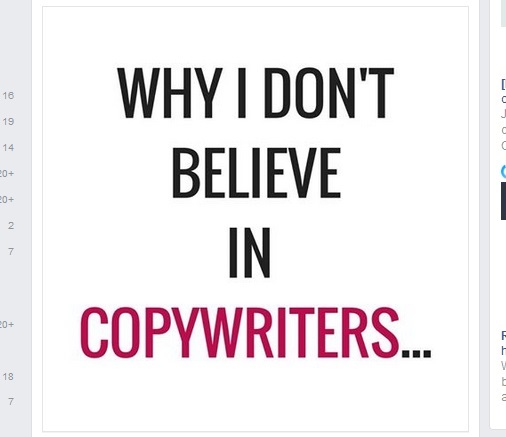
My initial reaction was,
“OMG! Who is this person saying something I think but I’m too scared to admit, for fear of upsetting my writer friends?”
It was Jen Hall. A Business Coach I am privileged to know and have a great deal of respect for.
So, if Jen can say it, surely, I can too?
However… let me qualify it with a story…

I’m in the third year of fully full-time self-employment.
For years I’d dabbled, hustled and played at business, all the while enjoying the security of a ‘proper job’.
But now, my business is my ‘proper job’!
Two years ago, I would have squirmed at that sentence. The voice of self-doubt especially vocal in my brain at that stage.
I felt like an imposter (because I was!).
I was an imposter because I said yes to everyone – so I didn’t run out of money – even when in my heart of hearts, I knew I didn’t want to do it.
Procrastinating to avoid the task.
Resenting every moment of it.
Looking back on a final product and knowing my clients weren’t getting the best from me.
I’m pretty sure I also ripped a couple of people off in the early days. I priced myself high to put them off, only to have them accept the quote!
This was when I was saying yes to copywriting gigs.
The problem is, when you walk into a networking event and call yourself a ‘writer’, everyone immediately assumes you are a copywriter.
They’ll throw some piecemeal scraps and a few website links at you and expect it magically turned into high converting, beautifully crafted, marketing copy. I was a start-up. I needed the cash. Who was I to say no?
It sucked!
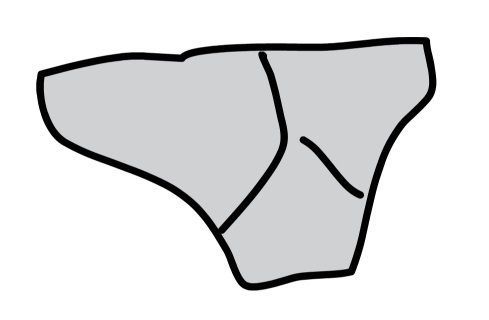
I Felt Fake
Every moment I was writing something, pretending to be someone else, I felt fake.
My mind wandered onto the things I wanted to write. Trapped at a desk, writing someone else’s words, while my own were buried. The novelist in me, who relished the experience of weaving a tall tale, was ignored.
The part of me that had spent the thick end of 20 years training and empowering, was silenced.
It took some time to realise this – as I stitched together the text for a housing association and an engineering firm to create some crude shrouds of website copy – I hated it because I didn’t believe in it.
I hated it because I didn’t believe in it.
Copywriting is fine, for some, but…
To set the record straight, I’m NOT saying I don’t believe in copywriting at all, or that the whole industry is somehow fake. It isn’t.
I absolutely get that not all of us have the time, or inclination, to write. Many businesses may not have the in-house resources to write. I appreciate that writing well is not a skill we all have.
Ultimately, as a business, you must…
Stick to what you do best and outsource the rest
But for me, doing it for people goes against everything I have ever stood for in my career and my life.
I pursued a path of training and coaching in my career because I wanted to empower others to embrace their own abilities.
When I started my own business, I wanted to share my love of creative writing with businesses to help them to learn to love their words.
If they are willing to ask for help, I want businesses to be able to articulate the passion behind what they do and why they do it. To be proud of their own achievements. To feel that satisfaction of releasing your words into the wild and enticing people into your world with them.
When I’m not respecting that, I’m not being authentic.
“No, I’m not a copywriter”
It took me a while to pluck up the courage to say it, but “No” is one of the most important words to use confidently in a business!
I still struggle to articulate what I do in my own words (I need my own coach for this!) – I coach / train / mentor / support / advise…
I DO NOT write it for you (even if you ask me nicely and pay me lots of money!)
Besides, I have more novels in me waiting to get out.
When I make time to write, I’m bloody well writing what I want to write, not selling that time to someone else!
One of the things I love about blogging is the often-overlooked professional development.
By regularly blogging you can…
Find your voice
Articulate your story
Learn more about yourself.
Learn more about what resonates with your readers.
Discover who your customers really are, it’s often different to who you think they are.
Find a common language, connecting you to your audience.
Join me in conversation in this FREE Webinar on 21st February ‘Blogging for Professional Development’

The post Why I Don’t Believe in Copywriting appeared first on Amy Morse - Authorpreneur.
January 31, 2018
When Is The Best Time To Start A Blog?
Starting a blog is a commitment – keeping your website alive, producing content regularly. But then, so is any ongoing project.
Maintaining momentum and consistency takes time, energy and discipline.
So, when is a good time to start?

The simple answer is… now!
There is never a ‘right’ time to start anything! ‘Tomorrow’, that mystical place where 90% of things happen!
Just do it! Just write! If you’re not brave enough to publish yet, draft words while they’re ripe and keep them until you’re ready.
For your first blog, it’s always good to have a couple of articles up your sleeve. New visitors need a reason to hang around in your virtual shop.
You can write, right now, today!
What’s stopping you?
Letting Your Blog Loose into The Wild
The logical time to let your words loose into the wild is when you launch a new website.
Why spend money on a lovely website if you squander all that SEO (Search Engine Optimisation) work your designer has done, by not keeping it up-to-date?
Having a blog is the single biggest thing you can do to make your website Google friendly. A blog attracts 97% more traffic to your website. Regular, consistent blogs give you a reason to go into your site at least once a month. Otherwise, be honest, it would quickly become a statue and Googlebot ignores those!
But a blog is SO much more than just SEO. That may be the initial motivation for starting a blog. But once you produce content you build a valuable information resource to use over and over again in your business.
You can repurpose that content into other products. But it’s also an information resource when working with a prospective customer.
Just this week, a startup wanting to build their brand presence and monetize their blog contacted me. I sent a link to a blog on how I make money from blogging, without promoting other brands. I demonstrated immediately that I know what I’m talking about and have the answers they need.
Having a blog, also means you never run out of things to share on social media. I’ve written many times about the benefits of blogging for businesses, that go way beyond SEO.
So, How Do You Get started with a Blog?
Here are my three quick start tips to get you going:
1) Capture Ideas
Start some sort of system to capture ideas. It could just be a notebook, or it could be a spreadsheet. Once you start jotting down ideas you’ll quickly spur on more. Check out my ‘Idea Generator’ workshop for some tools and exercises so you’ll never run out of ideas again.
2) Practice on other platforms
Not having your own website is no excuse, you can find your feet and practice on Linked In or start a free Blogger Blogspot. As you build up content and find your mojo, repurpose those early blogs onto your website, when it’s ready.
3) Take imperfect action
An imperfect article is better than nothing at all.
Your worst writing will always be better than the thing you never wrote.
Perfection is fallacy, it’s an impossible target so why set it for yourself? Your writing skills, as with anything, will naturally improve over time. In the early days, the chances are few people will see it anyway. You can always go back and edit it or unpublish.
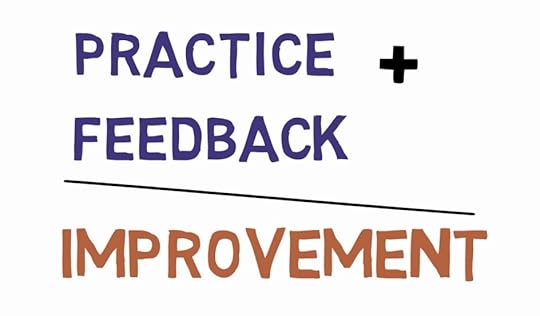
So, what are you waiting for? Stop procrastinating and just do it! And if you need a guiding hand, get in touch for a free chat.
For instant updates when I publish a new blog post, Follow me on Bloglovin’
For extra goodies and exclusive new information, join my mailing list HERE.
The post When Is The Best Time To Start A Blog? appeared first on Amy Morse - Authorpreneur.
January 29, 2018
A Simple Formula to Plan Your Blogs
I set myself a writing challenge at the end of last year to plan and draft 24 blog posts. I wanted to have all my core blogs banked for 2018, freeing up time and as a basis for my marketing plan for the coming year.
When I told people this (I like to tell people, then I feel accountable) – writing 24 blogs in just over a month – they were either overwhelmed by the idea, impressed that I could pull something off like that or dismissive of it because, “surely, preplanning your content like that squashes spontaneity and crushes creativity?”
Here’s my response to that…
Having a plan is not an anathema to creativity, it channels it. That’s why I chose that subject to be my first webinar of 2018. January is a great time of year to be planning and taking stock.
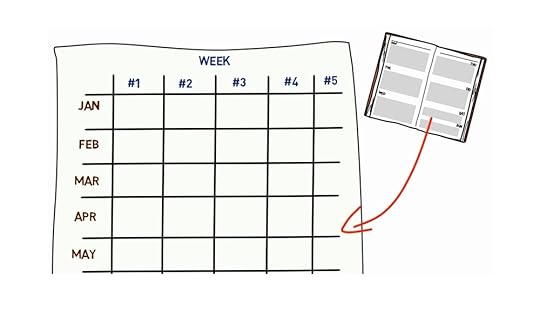
Why 24 Blogs?
I recommend a minimum of monthly to my clients when they are new to blogging. In an ideal world, businesses should blog weekly, but we don’t live in an ideal world! Telling someone who’s never blogged before to aim to do it weekly, is a little like asking someone to run a marathon when they won’t even run for a bus!
My business is all about the power of blogging to build your business, so I blog at least weekly (here or on my author site, on Linked In or as a guest somewhere) – however, having 2 a month already banked takes the pressure off. It also means that the other 2-3 weeks of the month, I have some wiggle room to be spontaneous.
I’m not about to suggest that we should all clear the decks and write 24 blogs! However, in the webinar, I did share simple tips and an exercise to plan your blogs for the year and make time to write them.
Watch the Summary of the Plan Your Blog Webinar here:
Step 1:
What do you want to achieve this year?
Step 2:
What events and activities will you be talking about in 2018?
Step 3:
Map these out on paper across the year
Step 4:
What themes occur each month?
Step 5:
What can you write about to encapsulate these themes?
Step 6:
Capture Ideas

Step 7:
Write it up digitally – use the spreadsheet developed as part of my ‘Creating a Content Calendar’ workshop (it’s FREE)
Step 8:
Plan and protect time in your diary to write
Step 9:
Get writing!
I work through this, and other exercises in more detail in the Creating a Content Calendar workshop.
Get the FREE Workshop HERE
More free webinars coming up for 2018, book HERE…
For instant updates when I publish a new blog post, Follow me on Bloglovin’
For extra goodies and exclusive new information, join my mailing list HERE (I only send a newsletter monthly so I won’t spam you, or share your information, I promise!)
The post A Simple Formula to Plan Your Blogs appeared first on Amy Morse - Authorpreneur.
January 22, 2018
FREE Guest Blogging Resources
Just because you have a shop on a high street, doesn’t mean you can’t have a pop-up shop on another street from time to time… That’s how I view guest blogging.
Staying in your own cosy little home on the internet, nesting in your own blog, is lovely and familiar and simple.
You have your shop (your website being your shop and your blog being a reason to come in and browse for a bit), but you’ll get more passing trade if you’re visible elsewhere too.
Your Pop-up Shop
You don’t even have to change your display much. A few small adaptations to something that already exists so it fits the new audience and the window you’ll be dressing – in other words, you can re-purpose an existing blog, update it, tweak it and pitch that to another site.
If you’re new to Guest Blogging, I always recommend starting with your existing network and targeting people you already know. They’ll be much more likely to agree, and ‘blog swapping’ is a lovely way to support someone in your network by showcasing them on your website, and in exchange they showcase you.
However, there comes a time, perhaps when you’ve had some experience guest blogging and are confident in your own blogging practice, to stretch your legs and approach new people to pitch a guest blog. It can take a lot of time and work researching websites that will accept guest posts. But there’s some good news….
Someone has done it for you already!
Massive Guest Blog Database…
If you’d like to learn more about Guest Blogging and how you can build it into your strategic marketing for your business, check out my ‘Reach Out With Guest Blogging’ online workshop. The workshop also includes a pre-build spreadsheet template, so you can build your own, super targeted, database of contacts.
PS: I’m always happy to consider guests on the blog…
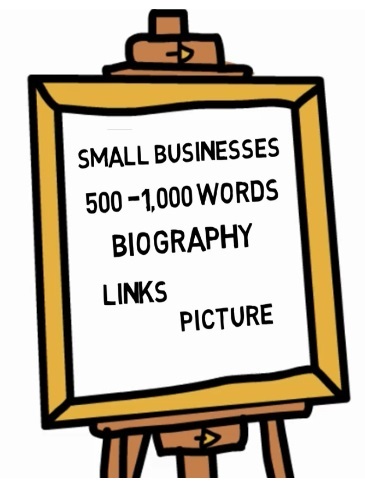
Pitch your ideas HERE
For instant updates when I publish a new blog post, Follow me on Bloglovin’
For extra goodies and exclusive new information, join my mailing list HERE.
I only send a newsletter monthly so I won’t spam you, I promise!
The post FREE Guest Blogging Resources appeared first on Amy Morse - Authorpreneur.
January 12, 2018
Is This The Death of the ‘Free’ Facebook Business Page?
Facebook. Love it or loathe it, is by far and away the biggest, and most popular Social Media Channel.
I was one of the first few thousand people to join Facebook in the early days. I joined in 2007 when we were making plans to relocate our lives to Bulgaria. It was a way to stay connected to everyone back home and share our little adventure with our friends and family. It’s still the only way to mobilise my family when we have a gathering!

As a blogger, and a mentor for businesses who blog, Social Media is a natural medium to share the story of your business.
Essentially, Social Media is just a form of microblogging.
I wouldn’t claim to be a social media guru, but I have enough expertise to run workshops introducing small businesses to the power of sharing their stories via Social Media. My focus is on what you write and how you write it to get the best results.
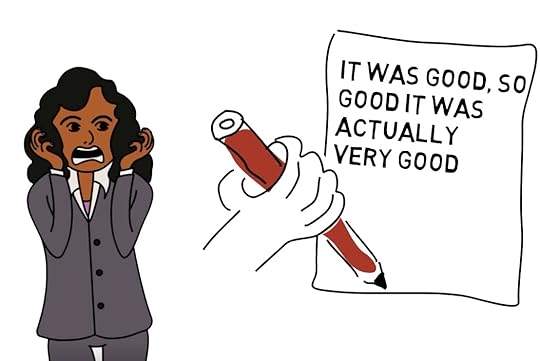
I’ve naturally gravitated to Facebook as my primary Social Media channel in my business. I’ve hung out there for so long I’m used to it, but perhaps it’s time for a change? Here’s why…
Facebook The Most Sociable Network
Facebook has always been the most sociable of the networks. The whole premise behind it is to do exactly that, keep friends and families connected, wherever they are in the world.
In the early days, it was pretty simple and clunky. Then in 2012, Facebook floated on the stock market, in one of the biggest and most anticipated shares sales in history. Initially, it made huge losses. However, from 2015 onwards, it started generating fantastic returns on investment for its shareholders.
So, what changed?
Mark Zuckerberg (the CEO of Facebook) always pledged it would be free for individuals. But, to to satisfy shareholders they had to make money somehow.
With businesses realising the potential of the data Facebook had on people, and the blurring of the lines between our work lives and our personal lives, Facebook had to be attractive to businesses.
In 2015, it became much more mobile responsive. In 2016, the Telegraph reported that internet access via mobile devices overtook desktop – Facebook was right on the money with that one!
This trend is continuing. Smartphones are becoming so sophisticated that for many, they have replaced the need to have a desktop at all.
For many businesses, their Facebook Business page is a gateway to their audience.
It is currently free to have a Facebook business page, and you can only trade on a business page. If Facebook even gets so much of a whiff that you are using a personal page to promote a business, they will block you.
Besides, your friends and family are not all necessarily your customers. They are connecting with you on Facebook to stay in touch with you, not your business. If they want to know about your business, give them a choice and invite them to like your business page.
I’ve unfriended acquaintances and even reported people who’ve used their personal page for business. I don’t want to see salesy junk on my News Feed.
And here’s the rub…
I’m not alone in not wanting to see sales stuff on my Facebook feed. In fact, no one likes seeing sales stuff on any of their social networks.
The problem is, too many businesses misuse Social Media as a way to push advertising on people.
Marketing Is No Longer About Pushing, But Pulling
Traditional marketing has always been about ‘pushing’ advertising at people. Interrupting them with sales messages. But the world of marketing has changed. Social Media is the major agent for that change. Yet businesses are slow to react, using Social Media as just another way to ‘push’, rather than ‘pulling’ potential customers into their world.
A blog invites people into your virtual shop and gives them a reason to browse for a while. We all know, as consumers, the longer we spend browsing in a shop the more likely we are to buy something, or at least remember that shop. We’ll return to it when we’re ready or recommend it to our friends. As a microblog, social media platforms – not only Facebook – are another way to allow people to browse in your business from different places and in different ways. They give people a glimpse. The quality of your content will draw them in further.
Start-ups and Facebook
When you start out in business, it takes time to build up all your resources.
Building a solid social following is great to get your business out there. But, I would always recommend hosting your blogs on your own website, where you can control it. You simply can’t rely on Facebook as your main online presence over the long term…
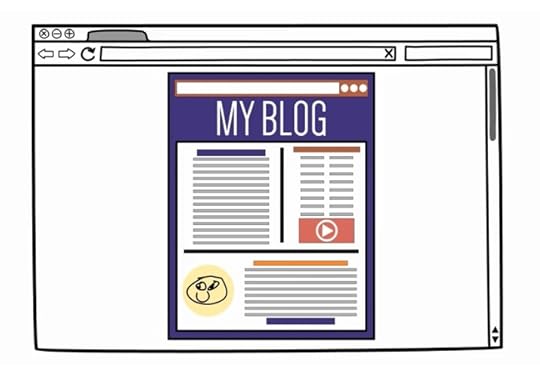
A case in point is today’s announcement from Facebook that, effectively, business page posts will no longer show up in personal Facebook feeds. The implication: ‘unless you pay for boosts and advertising’.
It means, no matter how useful, insightful or entertaining your content, it will no longer appear on user’s feeds. They will have to seek it out.
A new ‘explore tab’ is being introduced to separate business and personal content on news feeds.
This has the potential to be a good thing. It means people can easily find, and separate, business from personal content. At the same time, it could also mean business content won’t be seen organically.
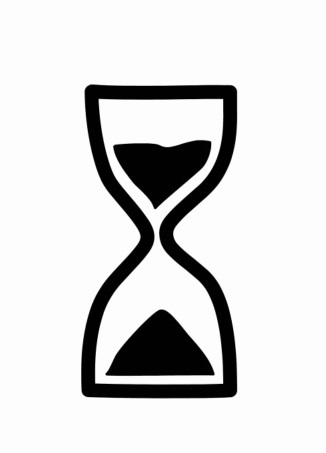 Time will tell how these changes will affect the experience of Facebook for businesses, but personally, you’ll be seeing less of me there and more of me on Linked In …
Time will tell how these changes will affect the experience of Facebook for businesses, but personally, you’ll be seeing less of me there and more of me on Linked In …
For instant updates when I publish a new blog post, Follow me on Bloglovin’
For extra goodies and exclusive new information, join my mailing list HERE.
I only send a newsletter monthly so I won’t spam you, I promise!
The post Is This The Death of the ‘Free’ Facebook Business Page? appeared first on Amy Morse - Authorpreneur.
January 2, 2018
Why I’m Not Goal Setting This January
(Article first published on Linked In)
Be honest, how many years have you set yourself New Year’s Resolutions, a goal that’s forgotten by February?
Are you one of the millions of people who join a Gym in January, go once then let their membership lapse? (I’ve certainly done that!)
Every year, we put ourselves under pressure to set goals in January for the year ahead, like New Year’s Day is a magical portal that only occurs annually!
I’ve blogged in the past about goal setting – It’s not that goal setting is bad, I’m just shifting my mindset for 2018.
Read them here:
Something to declare (2017)
How to decide what goals to set (2015)
10 reasons to train yourself to be goal orientated (2015)
Everywhere people are selling this myth of New Year = New You…
Stop!
Goal setting is not a once a year thing you feel you ought to do because the calendar says so. That’s why this year I’ve not set myself any goals.
OK, that’s not entirely true… I have ‘ambitions and intentions’ for the year ahead, but I would hardly call them defined goals or resolutions.
This year, I’ll write more, read more and be more creative.
For me, 2018 will be a year of discovery – that’s much too vague to be a SMART goal!
Instead, I’ll carry on as I was in 2017, setting myself weekly and daily tasks and targets to reach my wider personal growth and experience ambitions. I trust that success and reward will follow if I’m true to myself and my vision for my business.
Here’s the process I adopted last year and will refine for this year:
Step 1: Monthly Theme
Decide on a theme for the month ahead, plan this quarterly. I allocate the theme with a # to make it ‘digital friendly’ – January’s theme is #FreshThinking
Step 2: Weekly Intentions
On a Sunday, spend some time reflecting on the week ahead.
What do you want to get done the following week?
What do you want to be celebrating on Friday?
If you can keep your activities and achievements in line with your # theme you always have something to blog about and talk about on Social Media.
Step 3: Daily Achievements
At the end of each day, spend some time reflecting on what you want to do tomorrow.
How does this relate to your weekly intentions?
Like many of us, you probabaly have a massive long ‘To Do List’ that never seems to shrink. Threat this as a ‘Master To Do List’, and don;t be intimidated by it!
Stay focused and choose things off your ‘Master To Do List’ accordingly.
Have a ‘Daily To Do List’ of just 3 items and give them a traffic light priority:

Red – One thing you MUST do. Do this first.
Amber – One thing it would be good to do. Do this only after the first task is complete.
Green – One thing you’d like to do. Use this thing as a reward. You only deserve the reward when you’ve completed task 1 and 2.

Step 4: Done List
Now, write them on a ‘Done List’ – in fact, write everything on a ‘Done List’!
There will always be more than 3 things on that list (including the 3 on your ‘Daily To Do List’).
I have a day book that I carry everywhere and each day I keep a ‘Done List’. I like to embellish it with and doodles, so every day is a pleasure to record (I know, secretly, I’m a 15-year-old girl trapped in a 41-year-old body!). When I look back through the book I have a bright and cheery record of long lists of achievements, each one representing a baby step of progress in my journey as a business.
After all, the joy is in the journey, not the destination!
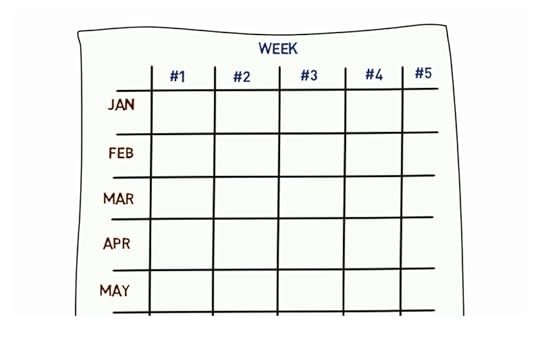
What are your ‘ambitions and intentions’ for 2018?
For instant updates when I publish a new blog post, Follow me on Bloglovin’
For extra goodies and exclusive new information, join my mailing list HERE.
I only send a newsletter monthly so I won’t spam you, I promise!
If you enjoy my blogs, buy me a coffee to say thanks. Donate to my ‘Coffee Kitty’ here (£2.50 / $3 will get me a cappuccino). Thank you 
December 22, 2017
3 Excellent Ways To Improve Your Visitors Experience On Your Website
It’s been a busy year in my evolving business in 2017, with many more visitors to my blog and some fantastic and inspiring businesses working alongside me.
I’ve been beavering away in the background, collating all my expertise on blogging into a series of online workshops I can coach clients through, and as a consequence, I’m about to go through the third iteration of my website, launching a whole series of packages to help businesses learn to love their words.
So, this piece of contributed content is timely for me, and my Technical Director (who is also my webmaster and husband!).
What small changes can you make to improve the experience of visitors to your website?

Image Credit: Pexels
When running a website, you want to make sure that your visitors have an enjoyable user experience (UX). You want them to have loved their time on your website and want to come back every time you publish new content. With this in mind, there are certain things that you can do to help improve their experience.
Social Media Buttons
You should have social media buttons and have them easy to see and use.
The bottom of a blog post or article is a good place for them to live and they should include all of the major social media networks such as Twitter, Facebook, Instagram, Pinterest, LinkedIn, StumbleUpon, and plenty of others.
You want to make sure that they are the ones that your viewers will want to share your content on. If they have to open an extra tap or manually share a post, then they are far less likely to do so. Y
ou should also be careful not to push social media too hard. Nobody likes a hard sell, and you want your visitors to want to share your content.
With that in mind, don’t have multiple places for social media buttons. Instead, be consistent and keep them all in a single place. You want people to be able to easily find them when they want to, but for them not to get in the way of their UX on your website.
Declutter
One of the worst things that you can do is to litter your site with images, things to click on, adverts calls to action and goodness knows what else.
At the end of the day, simple is best. You want to keep a clean, crisp landing page and keep this format throughout your website.
Having a lot of things going on is confusing and overwhelming, and it will put most people off from visiting your website. It will also increase the loading time of your website, and people don’t want to wait for a web page to load.
If you aren’t sure how to layout your website, then you need strip back your UX design and start again from the basics. Your content should be first and foremost, and then you can build up from there.
Keep adverts to a minimum and ensure that your side bars aren’t full of confusing things. Think about it from the perspective of a visitor and what their UX might be, and you’ll start to see what to include and what should be deleted.
Once you have decluttered your website, you need to resist the urge to gradually add things back in. Instead, you can move things to their own page on your site. For example, instead of having a contact form in your sidebar or on your homepage, put on a ‘Contact Us’ page. The same is true for a blurb about who you are and what the site is about. Your content should make it immediately obvious what is going on, and if people want to learn more then they have a specific page they can visit to do so.
Improve Navigation
This one is a biggie. Your website needs to be smooth to navigate.
This means that if someone is looking for a post on a specific thing, then they should be able to find it easily. Now, a search bar can help but unless they know exactly what they are after your visitor is going to struggle.
Instead, you should use tags and categories. This way a person can search for a general idea, and if you have used your tags correctly, then everything with that search term will appear.
Categories work slightly differently and can be used in your website’s main menu. If you talk about beauty products, break it down between reviews, information, news, etc. This way visitors can quickly find the sort of content that they are after and won’t become frustrated.
However, don’t go overboard with categories. Having a million categories and only a few items in each can be extremely confusing. Use categories for broad definitions of a post and then be very specific with your tags.
Another option is to have an entire page dedicated to a sitemap. This is a link to every page on your website and can be tucked away in the footer of every page. A site map is especially useful to a large website with a broad range of topics, but a smaller site might find it useful as well. You should not rely wholly on it and should still make clever use of tags and categories.
The post 3 Excellent Ways To Improve Your Visitors Experience On Your Website appeared first on Amy Morse - Authorpreneur.
December 21, 2017
Defining a Content Marketing Strategy For Your Blog
At this time of year we’re planning our marketing strategy for the year ahead. But what do we mean when we talk about ‘Content’?
I’m proud to host a guest on the blog this week, who reached out from down under, in Sydney. David Webb shares his insights on the importance of having a strategy for your content marketing. A relevant topic at this time of year as we plan our marketing for 2018.
If you need tools and guidance to get ahead with your planning, I have FREE online workshop ‘Creating A Content Calendar’ :
In the menatime, over to David…
Defining a Content Marketing Strategy for Your Blog
The world is starting to realize that the traditional forms of marketing are becoming less effective, as the advertising world is changing. We’re talking about the many forms of internet marketing, perhaps most important of which is content marketing, which is extremely popular with bloggers. Essentially, content marketing is regarded as strategic marketing that’s focused on coming up with and distributing valuable, relevant and consistent content, in the goal of attracting (and retaining) a relatively clearly defined audience, thereby driving more people to turn into customers. But how do you define your content marketing strategy, you may wonder.

Content, content, content
As mentioned, one of the pillars of content marketing success is providing valuable, relevant and consistent content for your visitors. While this truly is applicable everywhere, from providing content for your website, to doing so for your Facebook page, blogs emphasize this even further. Why? Well, as a blogger, your main goal is identical to your content marketing strategy: you need to provide quality content.
Providing valuable content means that your posts should be not only readable (watchable, good-looking), but interesting and intriguing too. Relevancy means that you can’t just post interesting stuff and hope to retain your visitors – the people that follow or frequently visit your blog are there for a niche reason (unless you brand your blog as a multi-topic hub). The content that you provide has to be relevant.
Finally, without consistency, both value and relevancy become, well, irrelevant. You need to post frequently in order to make sure that your blog doesn’t lose its fandom; this is the pillar of visitor retention.
Target audience

There is a multitude of reasons why you should find your target audience. The main reason why? Content strategy!
The number one step in outlining your content strategy is, you guessed it, defining your target audience!
Without a clearly outlined target audience, the entire step of making sure that your content remains relevant is thrown out of the window. To put it simply, defining your target audience means getting to know your readers – to cater both to the needs and preferences of those reading your blog, and of those who you would like to be visiting your blog in the future.
Age, gender and wealth are important factors here, but are far from sufficient. Gather as much info as you can, everything from device preferences to previous purchases and browsing habits plays an essential role in defining your content marketing strategy.
The goal
Every single advertising strategy needs a clearly defined goal that’s brief and to the point, and content marketing is no exception.
Structuring your blog’s goal around a single, clear vision of what you’re aiming to accomplish is vital, no matter how obvious this might seem.
The main answers that you need to provide are the exact aim of your strategy and what you’re trying to achieve with that aim. Again, no matter how ridiculous outlining the essence of your blog is, it is more important than it seems.
Decide where to market it
Yes, you will need to market your blog, quite possibly, every single post you make.
However, the good news is that this is very easy, and coverable in a matter of minutes. Most blogs have a “share” option for social media, and posting this on your main profiles and your blog’s social media presentations (yes, you will absolutely need these) is as easy as making a couple of clicks here and there. Keep in mind that this is exactly why people have liked/followed your page – they want to be able to keep track of what you post!
Also, think about what content type will be shared through which channels. For example, there is no need to post photos on your blog, whereas Instagram is perfect for this. On the other hand, posting an entire blog post on your Facebook page in the form of a status update is absolutely unacceptable and ridiculous.
Measure and analyze it
The thing that, unfortunately, many bloggers don’t realize is the importance of keeping track of your already distributed content. In order to become successful, every content marketing strategy needs measurement and analysis – you need to know which parts of it you’re satisfied with, and which need further improvement. Every experienced blogger knows how important making the most out of social media monitoring tools is here.
Google Analytics is also an awesome ally, and so are a variety of free online platforms that will help you track a wide range of social media statistics.
Make sure that it grows and evolves
A stagnating content marketing strategy is an inefficient one. Sure, consistency plays a vital part here, and some parts of it absolutely need to stay consistent (things such as business and end-goals), but every other aspect should be prone to changes.
This is where regular reviews, measurements and analyses help – periodical updates will, at some point, inevitably lead to growth and evolvement.
The first step of realizing the importance of a content marketing strategy is coming to terms with just how vital actual content is for your blog. In addition to being the main thing keeping your blog alive, it helps you define your target audience and keep track of your goals. Plan where and how you’ll market it online, keep track of measurements and analyses and do everything you can to make sure that your blog’s content marketing strategy keeps growing and evolving.
About the author

David Webb is a Sydney-based business consultant,online marketing analyst and a writer. With six years of experience and a degree in business management, he continuously informs the public about the latest trends in the industry. He is a regular author at BizzmarkBlog. You can reach him on Twitter or Facebook.
I’m always happy to consider pitches to feature as a guest on my blog. Get in touch HERE

The post Defining a Content Marketing Strategy For Your Blog appeared first on Amy Morse - Authorpreneur.

